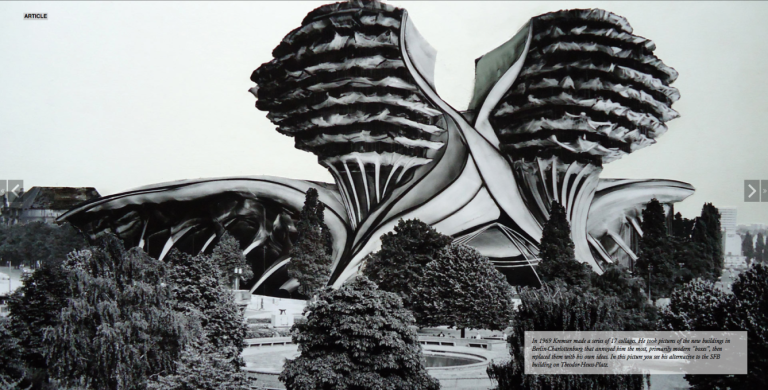Isozaki got the 2019 Pritzker, and I came across a picture on Twitter of him and Rem having a kind of dinner according to the Twitter caption they were talking about Metabolism. One article I found in the non-architectural press was the one which described Isozaki as the “The man who fused east and west.” This kind of hyperbole aside, I wanted to vomit, and I couldn’t work out why. But maybe its because I think the entire Pritzker prize thing is a flawed conception because it by and large supports the star architect regime. A regime of royalty ruling over the architectural masses. A regime whose tentacles reach across the globe into every aspect of architectural life: education, design and the way practices are managed.
Hashtag tyranny
I started to think about all those Instagram hashtags that architects are now enamoured with. I checked, and the hashtag #pritzker on Instagram has had 23,582 posts. Many of post-2000 Pritzker architects are all now on Twitter and Instagram. Of course, there are a few exceptions as not all of the Pritzker prize winners have readily embraced these new media channels build their brands. Both Doshi (2018) and RCR architects (2017) have a relatively low key presence on these platforms. Doshi only has one Instagram post which states: “Lifestyle celebrates when lifestyle and ecosystem fuse.” I mean what else can you say?
Pritzker winners and social media
Jean Nouvel (2008) has 12.1K followers on Twitter and 194k on Instagram as well as that #Jean Nouvel hashtag has almost 80,000 posts. On Intstagram, Shigeru Ban (2016) has 13.3k followers. Herzog De Meuron (2001) has 1681 followers on Twitter but 380K followers on Instagram. Even if you’re trying to split from the band and go out your own you can have your own account Thom Mayne (2005) of Morphosis has #thommayne with 5923 posts. But #Morphosis has 18,860 posts, but this includes posts for a brand of hair products. Even if you’re dead you can still get a hashtag, for example, Jorn Utzon (2003) who died in 2008 has #jornutzon with 8,308 posts. Other long-dead architects have lots of hashtag followers, for instance, @corbusier has 1067 followers, on Twitter but #corbusier has 41,072 Insta posts. LC® Le Corbusier has 722 followers and Corbu at @corbucorbu a Psych band from NYC have 25.8K followers on Insta. I might listen on to them on Spotify.
Zaha Hadid
But if you are a female architect social media popularity of any scale–even on a global scale–may not mean much. Another Pritzker winner, now deceased, is Zaha Hadid (2004) and Zaha Hadid Architects now has 508K followers on Twitter, and 687K followers on Instagram and #zahahdid has just under 370,000 posts as of March 2018. Indeed, Hadid is arguably the most significant Instagrammer of the Pritzker prize winners. Yet, as Katie Lloyd Thomas pointed out in Architectural Research Quarterly, Zaha Hadid’s death in 2016 gave rise to many of the old tropes of architectural misogyny, in the reporting of both her death and life. You can read what Katie writes below:
on_the_media_coverage_of_zaha_hadids_death
Craig’s List
And if you an architect who wants to sell something, and an acolyte who wants to buy something, then Instagram is just the place. You can buy the Glenn Murcutt Folio (2002) a “Limited Collectors Edition boxed folio of Glenn Murcutt’s design process and methods” has 2840 followers on Instagram and the followers and the #glennmurcuttmasterclass has 411 posts and the #glennmurcutt has 2,421 posts. It really doesn’t get more exciting than that, and maybe we will soon see architects selling stuff on Craig’s List.
YouTube
Then there is also YouTube. Broadcast in 2016 The Greg Lynn Show on YouTube, indicates the ways where the emergence of new distribution channels in social media collide, and I mean really collide, with the canon of high architectural culture. In 2016 Lynn was the curator of an exhibition at the Canadian Centre for Architecture in Montreal entitled Archaeology of the Digital: Complexity and Convention. The curatorial purpose of the exhibition was to examine how architects from the 1980s onwards sought to incorporate digital tools into architecture. So hey why not do a YouTube thang and develop what Lynn called an “an archaeological reading of how digital tools were incorporated into architecture.”
Arguably, if we are to be churlish, the purpose of this endeavour was to highlight Greg Lynn’s own position in the canon. Nothing like killing a few birds with one stone.
Using a late night talk show format Lynn employed YouTube to interview the architects of various projects these included amongst others “stand-up comedian and special effects guru Neil Denari,” and Patrik Schumacher, who is promoting his new book, “Para-Patrik Schumacher, which is about being Patrik Schumacher.” As reported the Youtube format lent itself to numerous sound bites as reported including Francis Roche exclaiming “I am not a digital masturbator,” and then saying “I wish I were a masturbator.” Alejandro Zaera-Polo being described as “just a peasant from Spain,” and Wolf -Pritz also interested in ensuring his place in the canon architecture. By you know just being Wolfy. The show ran for 11 episodes1 with each episode being around 10 to 11 minutes in duration.
But maybe Greggie really needs to get back onto Instagram as he only has 20 posts 1,745 followers. Although from the look of this post from a crit in Vienna he is trying. If architects are going to brand themselves then sometimes its good to have a refresh. Gregg Lynn FORM is getting a bit tired.
Cardi B and Alexandria
But in the scheme of things, despite all this hyperbole, architects are really not doing that well on social media. For example, Cardi B 41.4m followers for only 635 posts followers and Alexandria Ocasio-Cortez 386 posts 2.7m followers. Diet Prada has 1.2 million followers and Saint Hoax with 972K followers on Insta.
This really makes me think that the best Instagrammers in popular culture are those able to dis-assemble, play with and regurgitate the norms of that culture and its image-politics. I don’t see a lot of that on social media when it comes to architects and the so-called architectural canon. It looks like for architects the same old tropes and prejudices are being reproduced on social media. Quaint hero photos of Isozaki and Rem at dinner—post-coital Pritzker style–on Insta don’t really do it for me. But I guess if you don’t like what you see on Insta you can always watch Greg Lynn and his old 90s mates on YouTube.
No wonder I wanted to vomit.


























































